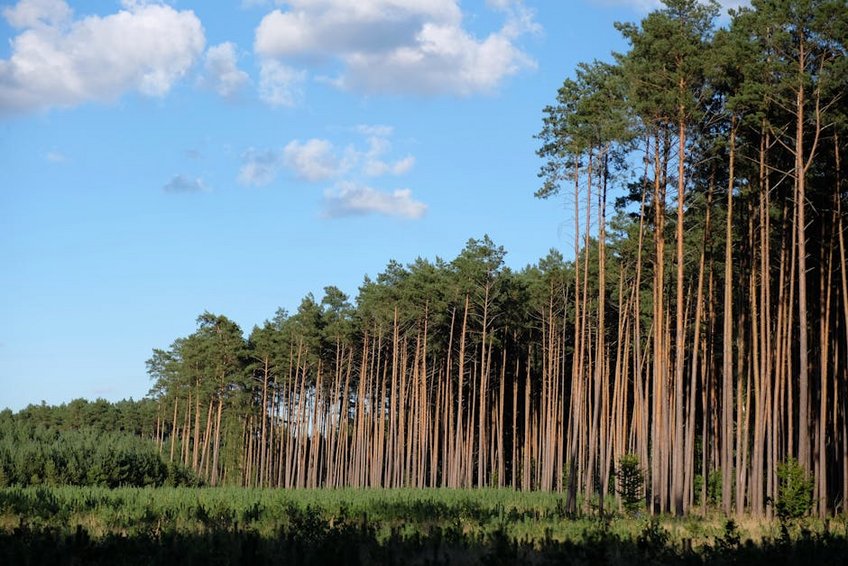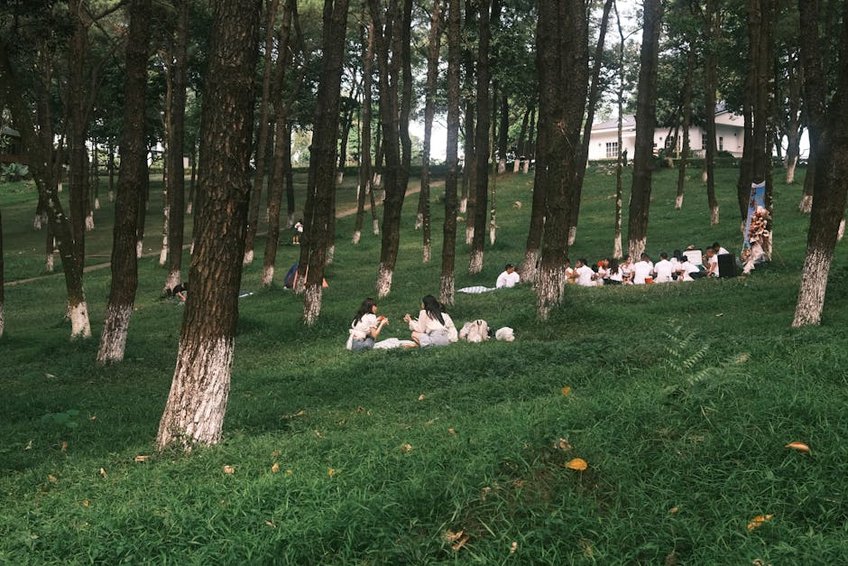Suriname Brownsberg Nature Park: Your Ultimate Rainforest Adventure Guide
Imagine waking up to the symphony of howler monkeys and toucans, with mist rising over pristine rainforest canopies—this is what awaits you at Suriname Brownsberg Nature Park. Nestled in the heart of South America’s Amazon region, this protected area offers an unparalleled escape into one of the world’s most biodiverse ecosystems. As you plan your trip, you’ll discover that Suriname Brownsberg Nature Park isn’t just another destination; it’s a immersive experience where you can hike through lush trails, swim under cascading waterfalls, and witness wildlife in its natural habitat. Whether you’re an avid birdwatcher, adventure seeker, or simply someone craving tranquility, this park delivers unforgettable moments. I’ve explored numerous nature reserves across the globe, but the raw, untouched beauty of Suriname Brownsberg Nature Park stands out for its accessibility and rich ecological significance. You’ll find detailed insights here to help you prepare for everything from budget considerations to seasonal visits, ensuring your journey is as smooth as it is magical. Get ready to disconnect from urban life and reconnect with nature in ways you never thought possible.
Suriname Brownsberg Nature Park Essential Information
Before diving into your adventure, it’s crucial to understand the fundamentals of Suriname Brownsberg Nature Park. Located approximately 130 kilometers south of Paramaribo, Suriname’s capital, this park spans over 12,000 hectares of primary rainforest teeming with exotic flora and fauna. Established in 1969, it was initially protected to conserve the region’s watershed and has since become a haven for eco-tourism. You’ll be exploring a area that sits on the Brownsberg plateau, with elevations ranging from 100 to 500 meters, offering stunning views of the Brokopondo Reservoir. The park’s management focuses on sustainable tourism, so your visit directly supports conservation efforts. Unlike more commercialized parks, Suriname Brownsberg Nature Park maintains a rustic charm, with basic facilities that enhance its authentic wilderness experience. As you wander through its trails, you’ll encounter everything from giant anteaters to vibrant poison dart frogs, making every step a discovery. Prepare for humid tropical conditions, with temperatures averaging 25-30°C year-round, and pack accordingly for muddy paths and sudden rain showers.
Location and Geographical Features
- Suriname Brownsberg Nature Park is situated in the Brokopondo District, easily accessible via a 2-3 hour drive from Paramaribo, followed by a boat ride across the reservoir, offering a scenic introduction to the region’s waterways.
- The park’s topography includes rolling hills, deep valleys, and multiple waterfalls like Irene and Leo Falls, with the plateau providing panoramic vistas perfect for photography and bird-watching.
- Key geographical elements include the Brownsberg Mountain and the surrounding Amazon basin, which contribute to the area’s high biodiversity and microclimates that support unique species not found elsewhere.
- Budget travelers can manage with $50-80 per day by camping or staying in basic lodges, cooking their own meals, and joining group tours for activities like bird-watching or waterfall visits.
- Mid-range options cost $80-120 daily, covering comfortable bungalows, guided hikes, and inclusive meal plans, often with transportation from Paramaribo arranged through tour operators.
- Luxury experiences range from $120-150+ per day, featuring private guides, specialized wildlife tours, and upgraded accommodations with amenities, though options are limited due to the park’s eco-focus.
- Official Suriname Tourism Board
- Lonely Planet Suriname Travel Guide
History and Conservation Significance
Suriname Brownsberg Nature Park has a rich history tied to Suriname’s colonial past and modern conservation movements. Originally inhabited by Indigenous and Maroon communities, the area gained protected status in the late 1960s to prevent deforestation from mining and logging. Today, it serves as a critical habitat for endangered species such as the jaguar and giant otter, with ongoing research programs monitoring ecosystem health. Your visit helps fund these initiatives, making you a part of its preservation story. The park’s collaboration with local communities ensures that tourism benefits are shared, promoting cultural exchange and economic sustainability. Over the decades, it has evolved from a little-known reserve to a bucket-list destination for nature lovers, yet it remains refreshingly uncrowded compared to other Amazonian parks.
Suriname Brownsberg Nature Park Planning Your Trip
Planning your visit to Suriname Brownsberg Nature Park requires careful consideration of seasons, budgets, and logistics to maximize your experience. Start by deciding when to go; the dry season from February to April offers the best hiking conditions, while the wet season from May to August brings lush greenery but muddy trails. You’ll need to book accommodations in advance, as options are limited and fill up quickly during peak times. Budget-wise, expect to spend between $50-150 per day depending on your travel style, covering permits, guides, food, and transport. I recommend allocating at least 3-4 days to fully immerse yourself in the park’s offerings, from dawn wildlife spotting to evening campfires. Don’t forget to check visa requirements if you’re traveling from the US or EU; Suriname offers tourist visas on arrival for many nationalities, but it’s best to verify current regulations. Pack essentials like insect repellent, waterproof gear, and sturdy hiking boots to ensure comfort during your explorations.
Best Time to Visit Suriname Brownsberg Nature Park
The ideal time to explore Suriname Brownsberg Nature Park is during the dry season from February to April, when rainfall is minimal and trails are more accessible for hiking and wildlife viewing. During these months, you’ll enjoy clearer skies and lower humidity, making it easier to spot animals like capuchin monkeys and tapirs near water sources. However, if you prefer fewer crowds and don’t mind occasional showers, the shoulder seasons of September to November offer a balance of decent weather and tranquility. Avoid the peak wet season from May to August, as heavy rains can lead to trail closures and reduced visibility, though the rainforest’s vibrancy is at its peak. Regardless of when you visit, early mornings and late afternoons are prime for animal activity, so plan your daily itinerary around these times for the best encounters.
Budget Planning and Costs
Essential Preparation Checklist
To ensure a smooth trip, start by securing necessary permits and bookings at least a month in advance, especially if visiting during popular periods. You’ll need a valid passport and, for most Western travelers, a tourist visa obtainable upon arrival in Paramaribo. Health-wise, consult your doctor about vaccinations for yellow fever and malaria prophylaxis, as the park is in a tropical zone. Pack light but efficiently: include quick-dry clothing, a first-aid kit, reusable water bottles, and high-energy snacks for trails. I also recommend downloading offline maps and learning basic Dutch or Sranan Tongo phrases, as English isn’t widely spoken outside tourist areas. Finally, arrange travel insurance that covers adventure activities and medical evacuation, giving you peace of mind as you delve into the wild.

Suriname Brownsberg Nature Park Top Attractions and Activities
Once you arrive, Suriname Brownsberg Nature Park unveils a world of adventures tailored to diverse interests. Hiking is the main draw, with well-marked trails leading to breathtaking viewpoints and hidden waterfalls. The Mazaroni Plateau Trail, for instance, offers a moderate 2-hour hike through dense forest, where you might glimpse troops of squirrel monkeys or colorful toucans. For water enthusiasts, swimming in the crystal-clear pools beneath Irene Falls provides a refreshing break, while kayaking on the Brokopondo Reservoir lets you explore the park from a different perspective. Birdwatchers will be in heaven, with over 400 species recorded, including the iconic Guianan cock-of-the-rock and harpy eagles. I suggest joining a guided night walk to discover the park’s nocturnal creatures, from tree frogs to kinkajous, an experience that adds a thrilling dimension to your visit. Remember to respect wildlife by keeping a safe distance and following your guide’s instructions to minimize impact.
Must-See Highlights
Your itinerary should prioritize the park’s iconic spots, such as the Brownsberg Summit, where you can enjoy panoramic views of the reservoir and surrounding rainforest at sunrise. Another must-see is Leo Falls, a powerful waterfall accessible via a scenic hike, perfect for a picnic or a cooling swim. Don’t miss the opportunity to visit the Maroon villages nearby, where you can learn about local culture and traditions, adding a cultural layer to your nature escape. These highlights not only showcase the park’s natural beauty but also its role in community-based tourism, ensuring your travels support sustainable development. Allocate sufficient time for each site, as rushing through could mean missing subtle wonders like orchid blooms or animal tracks along the paths.
Hidden Gems and Local Favorites
Beyond the well-trodden paths, Suriname Brownsberg Nature Park hides lesser-known treasures that offer solitude and unique experiences. Seek out the secluded Kankantrie Trail, a rugged path that leads to ancient giant trees and quiet streams favored by wildlife. Locals often recommend the early morning boat tours on the reservoir, where you can watch mist lift over the water and spot river dolphins playing in the waves. For a cultural twist, visit on a weekend when community-led workshops on traditional crafts or storytelling might be available, giving you deeper insights into the region’s heritage. These hidden gems require a bit more effort to find but reward you with intimate moments away from the crowds, making your trip truly memorable.
Suriname Brownsberg Nature Park Practical Travel Information
Navigating the logistics of Suriname Brownsberg Nature Park is straightforward with proper planning. Most visitors fly into Johan Adolf Pengel International Airport near Paramaribo, then take a 2-3 hour drive to the town of Brownsweg, followed by a short boat transfer to the park entrance. Public transportation is limited, so renting a 4×4 vehicle or booking a tour package is advisable for convenience. Once inside, walking is the primary mode of transport, though some areas allow bicycles for rent. Accommodations range from basic campsites to rustic lodges, with options like the Brownsberg Nature Park Lodge offering comfortable stays with meals included. I’ve found that hiring a local guide enhances safety and enriches your experience, as they can point out wildlife and share fascinating ecological facts. Be prepared for limited cell service and electricity in some areas, so carry power banks and inform someone of your itinerary before heading out.
| Category | Options/Features | Price Range (USD) |
|---|---|---|
| Accommodation | Basic campsites, shared dormitories, private bungalows with eco-friendly amenities | $20-80 per night |
| Activities | Guided hikes, waterfall visits, bird-watching tours, cultural workshops | $15-50 per activity |
| Transportation | Boat transfers, 4×4 rentals, guided tours with pickup from Paramaribo | $30-100 depending on group size |


